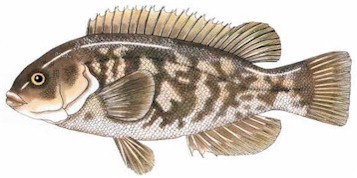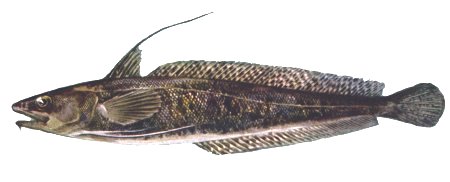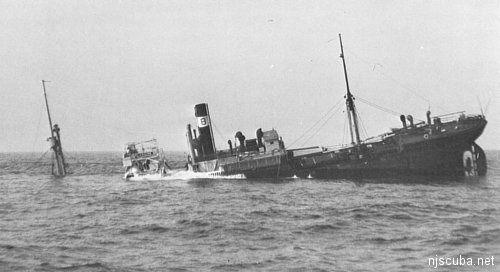Spearfishing - Your Quarry
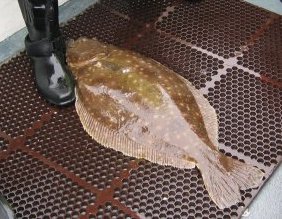
Here are some pointers for hunting the most common food fishes in our waters. Always make sure a fish that you are targeting is of legal size and in-season - the same rules that apply to hook-and-line fishing apply to spearfishing. Unless you are sure, don't shoot it. See Catch Restrictions & Regulations for catch limits. See also Marine Biology for more detail on all of these and many others.
Black Sea Bass, Porgies,
& small Blackfishes
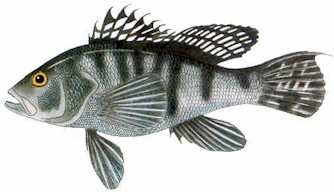
These relatively small fishes are best pursued with a pole spear - you will need the high rate of fire to catch enough to be worthwhile. Sea Basses like to hide under and around structures, and can often be approached closely if they think they are safe in their den. For firing into enclosed spaces, the pole spear is again the weapon of choice. Try to hit the fish at the back of the head, or in the shoulder. Shots into the soft belly often tear out.
Even small Blackfishes are quite tough, and the initial penetration may not be enough to hold them, so push down quick and hard. All of these, but especially Sea Bass, have needle-sharp spines along the back and belly, which can easily penetrate a glove if handled carelessly. With bare hands, the edges of the gill covers can also give a nasty cut. Don't forget - a big bag of Sea Bass will become your all-day whittling project later. Sea Bass disappear when the water temperature drops below 50°F, and return again when it warms up. There's not a lot of meat on a Porgy, so only the biggest ones are worth taking.
Large Blackfishes
Large Blackfishes have hides like leather and massive bony skulls. Even at close range, a pole spear may just glance off - a speargun is best. Again, shoot for the back of the head or the shoulder, where the fish is most solid. A shot directly to the head may just bounce off. Sometimes the fish will be briefly stunned, and you can recover it by hand. At very close range, shoot at the eye for a very quick and easy kill. As said above, Blackfishes usually thrash and spin when hit, and must be pinned down quickly. Like their tropical cousins, Blackfish fall asleep at night, making them sitting ducks at that time.
Blackfish are most plentiful on the inshore wrecks and reefs from May through June. In July the big adults disappear from the wrecks to their spawning grounds near the beaches, returning in August. As the temperature drops in the Fall, they begin to migrate out to their deep water overwintering areas until Spring. When the water temperature drops below 50°F, Blackfish become rare. The few that stay inshore become quite sluggish, remaining in holes and nooks in a torpid, trance-like state. If you can find them, they are easy prey. I've even gotten them with my knife.
Flounders
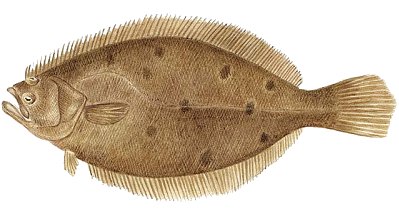
For many years prior, there was essentially no flounder of legal size to be found, but finally increased minimum sizes have paid off, and 2002 brought a bumper crop of doormat-sized Fluke, and some nice-sized Winter Flounder as well.
Flounders have extraordinary reflexes - much faster than our own. They can easily evade most hand captures, and simply stabbing at them with a knife will usually only result in a wounded fish that gets away, if you manage to touch it at all. They are not fast enough to evade a pole spear, though. Shoot at the head if possible, so that even if the fish takes off, you will hit it somewhere. Flounders often travel in schools which disperse after you hit the first fish, but if you are careful and quiet you can sometimes get several. Like the fishes above, flounders vanish into deep water when it gets cold.
Winter Flounder and Summer Flounder ( or Fluke ) have distinctly different seasons, minimum sizes, and bag limits, so you should be certain what you are shooting at before you do. Rather than try to remember all the details while you are in the water, a good rule of thumb for the summer months is: if there is at least 3/4 of an inch between the eyes, you can take it. Less than 3/4 of an inch, and you have an out-of-season Winter Flounder, or a too-small Fluke.
Ling, Whiting, Codfishes
These fish are quite soft in the body. A pole spear with a paralyzer tip works best; anything else is likely to tear them apart so badly that they get off and get away. Even with a paralyzer, a belly shot will not hold the fish, instead, a good head shot works best, followed by a quick pinion. Oblique shots also work well, although they tend to mess up the fillets. I recommend a canvas bag rather than a mesh bag for hunting these fishes - they are very slimy and smelly, although they yield excellent flaky white boneless flesh if prepared properly.
Goosefish
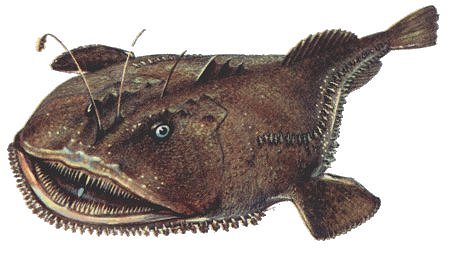
Goosefish, or Monkfish, as they are known commercially, have powerful jaws and long sharp teeth that can lacerate a hand and destroy a glove or suit, so they should be treated with caution. However, they are not very active, nor are they usually interested in anything that does not come within snapping range. One exception to this is females that are guarding eggs - these can be very aggressive and will attack and even pursue an incautious diver.
One technique that works with this fish is to shove a pole spear straight down between the eyes, pinning the fish to the bottom, and hopefully disconnecting its brain. Stab it in the head with your dive knife if necessary to complete the job, but don't try to handle this fish until it shows no further sign of resistance. If you don't have a spear, you can try attacking directly with a pointed knife.
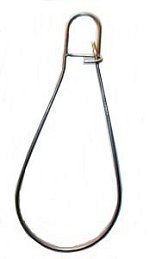
Now the fun part: a large Goosefish may be up to four feet and fifty pounds, and is unlikely to fit in your bag. It is better to use a steel fish stringer, as shown at right. Open the stringer, and push it down through both jaws of the fish. You can sharpen the end of the stringer with a file to make this easier. Now, when the stringer is clipped shut, so is the fish's mouth, just in case it wakes up.
Goosefish are one of the slimiest fish in the sea ( although not particularly smelly, ) and will make a disgusting mess of you, your gear, and your boat, so try to handle the fish as little as possible. If you use a stringer as described, you can suspend it below you with a piece of line, clip it to the anchor, or send it up on a lift bag. When bringing the fish aboard the boat, either put it directly into a cooler or haul it up on the swim step and clean it right then and there. Scrub anything that it has touched with soap and water as soon as possible - don't let the slime dry.
All this is more trouble than most people are willing to go through for a fish. However, if you do take one of these, the meat is boneless and has a consistency and flavor much like lobster, perhaps even better than lobster.
Striped Bass, Bluefish, Jacks, etc
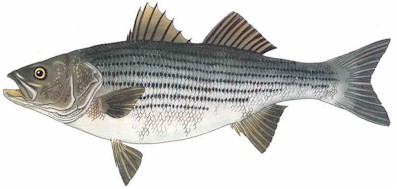
Fast-moving mid-water fishes are only going to present long shots for a speargun. I've never shot a Striper, or even shot at a Striper, but I imagine that these large fast fish would require a gun to take down successfully. Someone feel free to fill in the blanks here.


